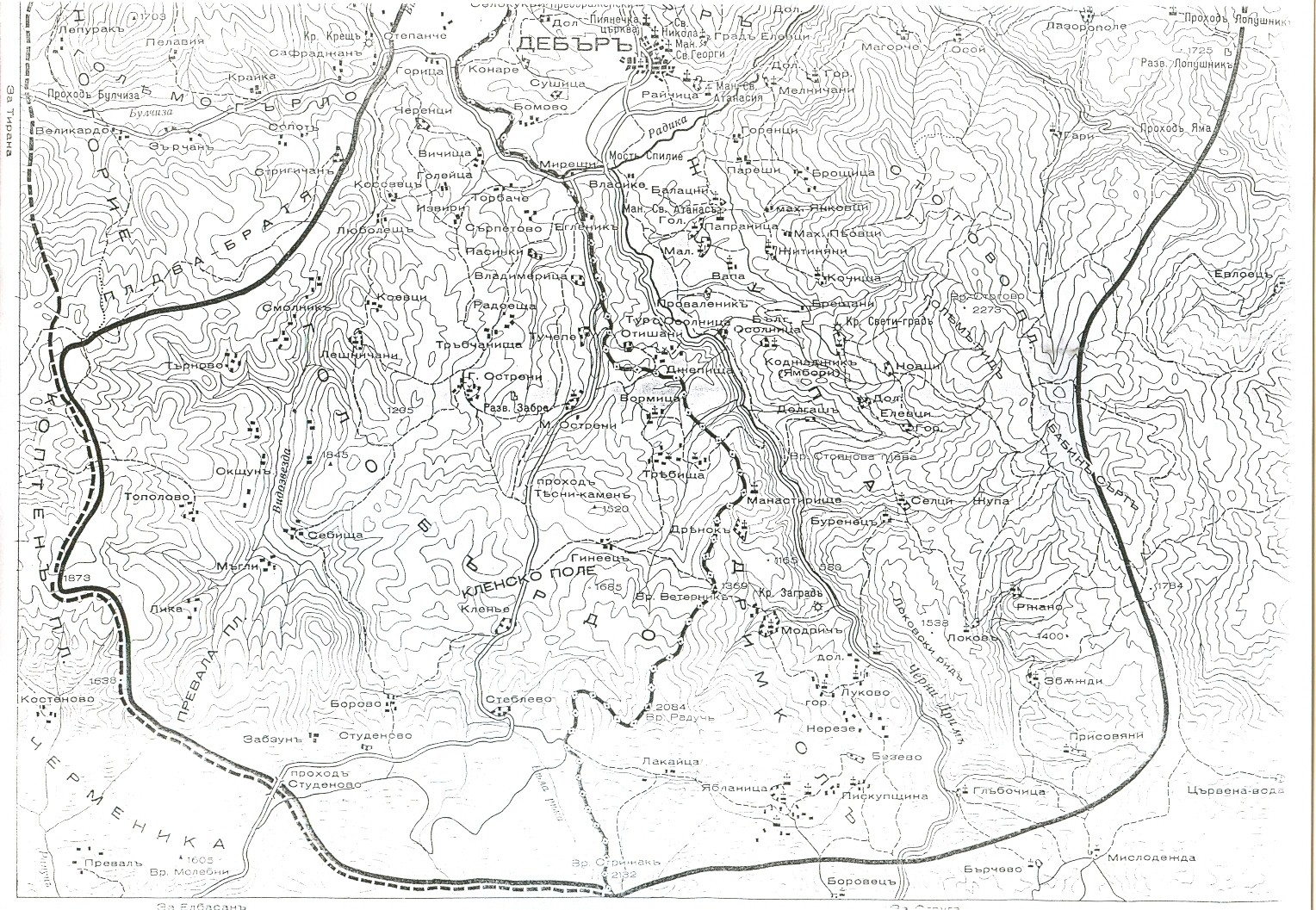|
Klenjë
Klenjë () is a village in the former Trebisht Municipality in Dibër County in northeastern Albania. At the 2015 local government reform it became part of the municipality Bulqizë. It is situated with in the Gollobordë region, near the border with North Macedonia. History During the Balkan Wars, one man from the village joined the Macedonian-Adrianopolitan Volunteer Corps in Bulgarian Army. Demographic history Klenjë (''Kilani'') is recorded in the Ottoman ''defter'' of 1467 as a settlement in the timar of Hacı Hamza in the vilayet of Dulgoberda. The village had a total of three households represented by ''Dimitri Susjabi'' (possibly, ''Sycjapi''); ''Gjurçe'', the grandson or brother-in-law of ''Dimitri''; and ''Miho Tishani''. The surname ''Susjabi'' is likely a compound of Albanian ''sy'' ("eye") + ''cjap'' ("billy goat"). A Bulgarian demographic survey of the population of the village, done in 1873, recorded the village as having 100 households with 196 male Bu ... [...More Info...] [...Related Items...] OR: [Wikipedia] [Google] [Baidu] |
Gollobordë
Gollobordë ( sq-definite, Golloborda or Kalabardha; ; ) refers to a geographical area of traditionally 24 villages of which 18 are situated primarily in eastern Albania, with a small portion consisting of six villages lying within North Macedonia. This region is located within the Dibër and Elbasan counties which contain both Macedonian and Albanian villages. This region, like neighboring regions, has historically been economically linked to the city of Debar, which was traditionally referred to by inhabitants as simply "the City" or "Shehr". History Ottoman period The Islamization process is held to have occurred in Golloborda relatively late in Ottoman times.Toncheva, Veselka (2013). "The Slavonic Community from the Golo Bardo Region, Republic of Albania: Traditions, Music, Identity". ''Our Europe. Ethnography – Ethnology – Anthropology of Culture''. Volume 2. Pages 40–42 In 1519, the region was still entirely Christian.Limanoski Niyazi (1993), Islamizatsijata i e ... [...More Info...] [...Related Items...] OR: [Wikipedia] [Google] [Baidu] |
Trebisht
Trebisht (, ) is a former municipality in the Dibër County, eastern Albania. At the 2015 local government reform it became a subdivision of the municipality Bulqizë. The population at the 2011 census was 993.2011 census results Geography The village is situated in the geographical area of . Within the municipality, the village of Trebisht consists of the three neighborhoods of Trebisht-Muçinë, Trebisht-Balaj, and Trebisht-Çelebi. (in the local Macedonian dialect - Dunomala, Gurnomala and Unomala). These neighbor ...[...More Info...] [...Related Items...] OR: [Wikipedia] [Google] [Baidu] |
Bulqizë
Bulqizë (; sq-definite, Bulqiza) is a municipality in Dibër County, northeastern Albania. The municipality consists of the administrative units of Fushë-Bulqizë, Gjoricë, Martanesh, Ostren, Shupenzë, Trebisht, Zerqan with Bulqizë constituting its seat. As of the 2023 census, there were 7,875 people residing in Bulqizë and 26,826 in Bulqizë Municipality. Demographic history Bulqizë is recorded in the Ottoman ''defter'' of 1467 as a '' hass-ı mir-liva'' and '' derbendci'' settlement in the vilayet of '' Dulgoberda''. Although the register's complete survey on the village is missing, the following household heads are attested: ''Dimitri Bogdani'', ''Kolë Sharqini'', ''Gjin Kimeza'', ''Gjin Kolandi'', ''Nikolla Budi'', ''Martin Bardi'', ''Progon Buljani'', ''Maqe Kimëza'', ''Istvan Nenada'', ''Progon Bogdani'', ''Dimitri'', ''Todor Damëza'', ''Banek Alakasa'', ''Nikolla Mesina'', ''Budi'', ''Gjergj Garuja'', and ''Gjergj Iglat'' (from ''i gjatë'', "the tall ... [...More Info...] [...Related Items...] OR: [Wikipedia] [Google] [Baidu] |
Populated Places In Bulqizë
Population is a set of humans or other organisms in a given region or area. Governments conduct a census to quantify the resident population size within a given jurisdiction. The term is also applied to non-human animals, microorganisms, and plants, and has specific uses within such fields as ecology and genetics. Etymology The word ''population'' is derived from the Late Latin ''populatio'' (a people, a multitude), which itself is derived from the Latin word ''populus'' (a people). Use of the term Social sciences In sociology and population geography, population refers to a group of human beings with some predefined feature in common, such as location, race, ethnicity, nationality, or religion. Ecology In ecology, a population is a group of organisms of the same species which inhabit the same geographical area and are capable of interbreeding. The area of a sexual population is the area where interbreeding is possible between any opposite-sex pair within the area ... [...More Info...] [...Related Items...] OR: [Wikipedia] [Google] [Baidu] |

